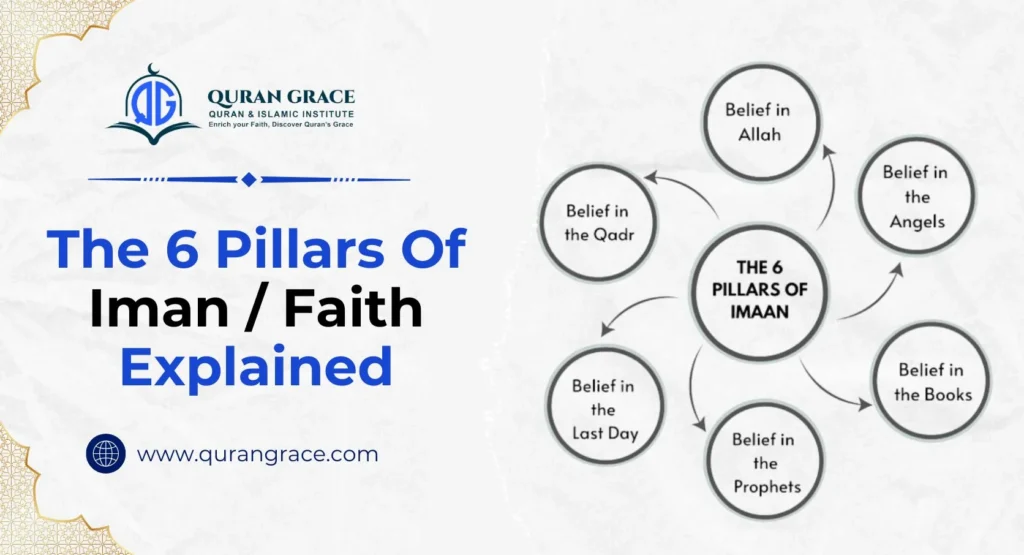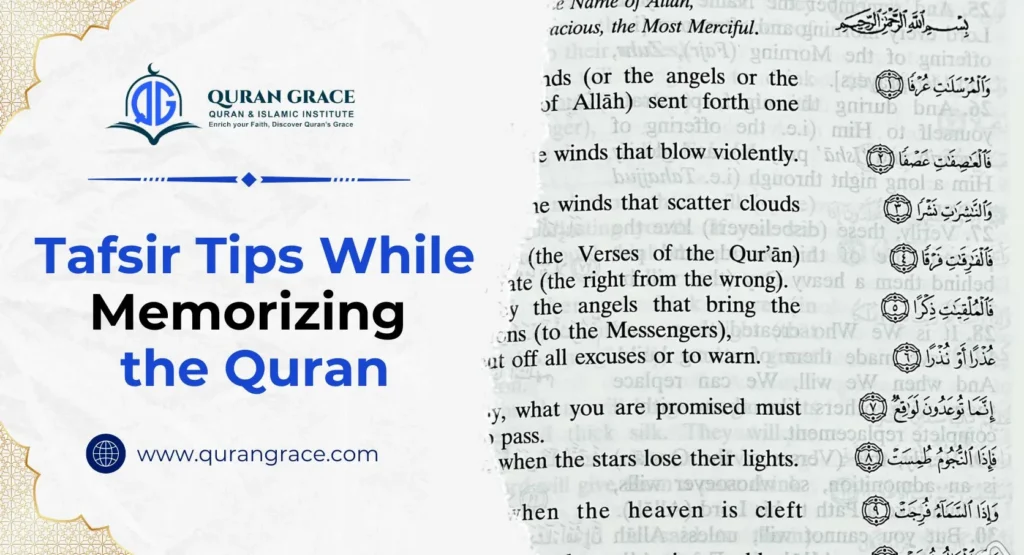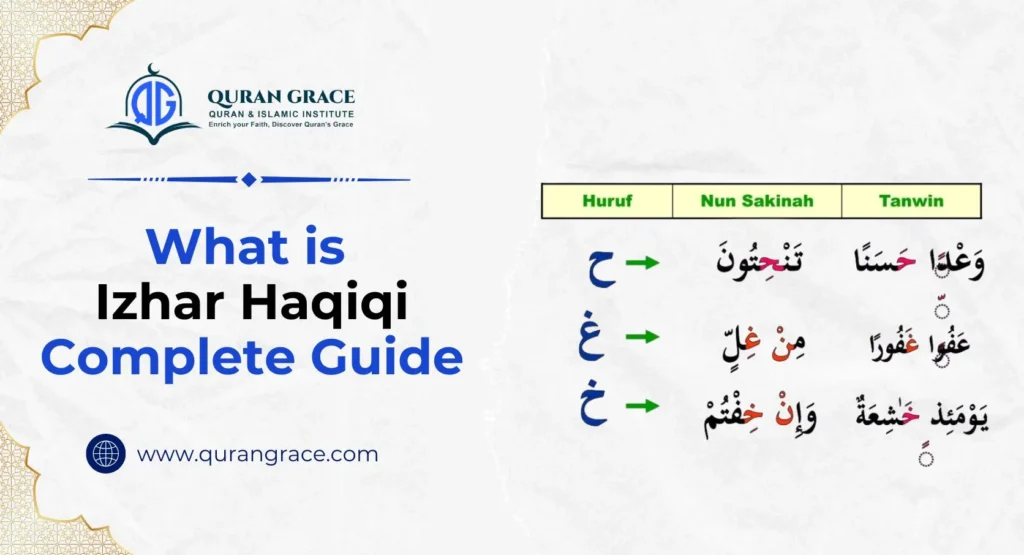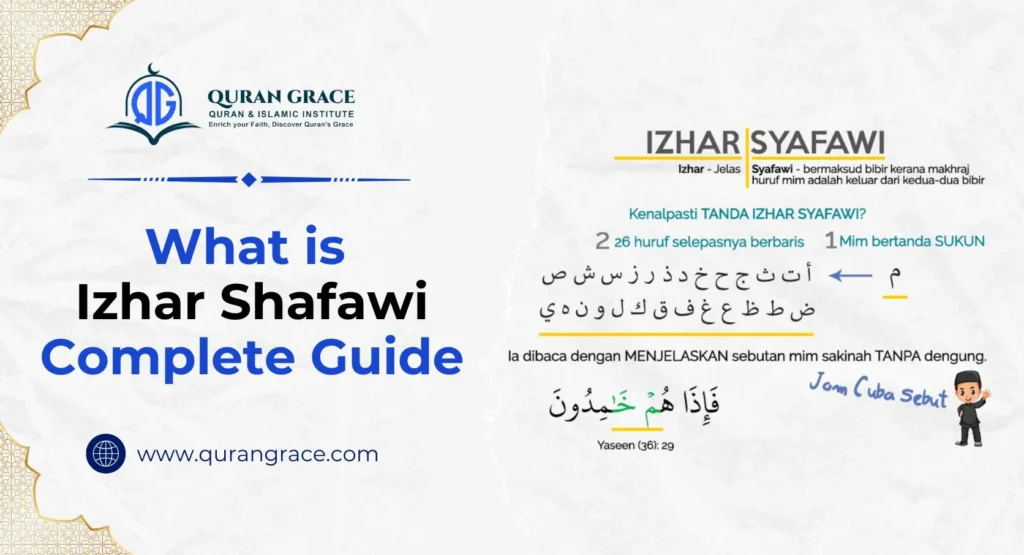Tajweed encompasses a variety of intricate rules, and one of the most important is “Madd” (مَدّ), known as the elongation rule. The term “Madd” translates to “to stretch” or “to lengthen,” and it specifically pertains to the elongation of certain vowel sounds in the Arabic language. Understanding and mastering Madd is essential for anyone who wishes to recite the Quran with accuracy, aesthetic appeal, and under the Sunnah.
In this blog post, we will explore the concept of Madd in detail, discussing its various types and providing clear examples to enhance your understanding and application of these basic tajweed rules in your Quranic recitation.
What Are the Madd Letters?
Before exploring the various types of Madd, it’s important to understand the three fundamental “Madd letters” (حروف المد), which play a crucial role in elongating the sounds in Arabic pronunciation:
- Alif (ا):
This letter occurs when it is preceded by a Fathah (ــَ). An example of this can be seen in the word قَالَ (qāla), where the Alif serves to extend the pronunciation of the vowel sound.
- Waw (و):
This letter appears when it is preceded by a Dammah (ــُ). For instance, in the word يَقُولُ (yaqūlu), the Waw allows for the elongation of the vowel sound that follows.
- Ya (ي): This letter is used when it is preceded by a Kasrah (ــِ). An example is the word فِي (fī), where the Ya contributes to the lengthening of the vowel sound.
It’s essential to note that these three letters must be in a sakin state (without any vowel) for Madd to occur effectively.
The Two Main Categories of Madd
Madd is broadly categorized into two types:
- Madd Asli (مَدّ أصلي) – Natural Madd: This is the most basic and inherent form of elongation, occurring naturally without any specific cause like a Hamzah (ء) or Sukoon (ْ) following it. It is always prolonged for two counts (or two Harakat). If you remove this,add, the meaning of the word changes or becomes incorrect.
Examples:
- قَالَ (qāla) – The ‘a’ sound in ‘qa’ is stretched.
- يَقُولُ (yaqūlu) – The ‘u’ sound in ‘qū’ is stretched.
- فِي (fī) – The ‘i’ sound in ‘fī’ is stretched.
Madd Far’i (مَدّ فرعي) – Secondary Madd: This type of Madd occurs due to a specific reason, either a Hamzah (ء) or a Sukoon (ْ) appearing after a Madd letter. Madd Far’i can be stretched for more than two counts, depending on its specific type.
Let’s break down the various types of Madd Far’i:
10 Types of Madd Far’i
1. Madd Wajib Muttasil (مَدّ واجب متصل) – Obligatory Connected Madd
A Madd letter is followed by a Hamzah in the same word. It must be prolonged for 4 or 5 counts.
Examples:
- جَاءَ (jā’a) – The Alif is followed by Hamzah in the same word.
- سُوءٌ (sū’un) – The Waw is followed by Hamzah in the same word.
- سِيءَتْ (sī’at) – The Ya is followed by Hamzah in the same word.
2. Madd Ja’iz Munfasil (مَدّ جائز منفصل) – Permissible Separated Madd
A Madd letter is at the end of one word, and a Hamzah is at the beginning of the next word. It can be prolonged for 4 or 5 counts. It’s “permissible” because reciters have the option to shorten it to 2 counts in some recitations, though 4-5 is preferred for Hafs ‘an ‘Asim.
Examples:
- بِمَا أُنزِلَ (bimā unzila) – The Alif at the end of “bimā” is followed by Hamzah at the start of “unzila.”
- قَالُوا آمَنَّا (qālū āmannā) – The Waw at the end of “qālū” is followed by Hamzah at the start of “āmannā.”
- فِي أَنْفُسِكُمْ (fī anfusikum) – The Ya at the end of “fī” is followed by Hamzah at the start of “anfusikum.”
3. Madd Badal (مَدّ بَدَل) – Substitute Madd
A Hamzah precedes a Madd letter in the same word. This type of Madd is essentially a substitution for two Hamzas (the first with a vowel, the second with a sukoon), where the second Hamzah is replaced by a Madd letter that matches the vowel of the first Hamzah. It is prolonged for 2 counts.
Examples
- آمَنُوا (āmanū) – Originally أأمنوا, the second Hamzah with sukoon was replaced by Alif.
- إِيمَانًا (īmānan) – Originally إئمانًا, the second Hamzah with sukoon was replaced by Ya.
- أُوتُوا (ūtū) – Originally أؤتوا, the second Hamzah with sukoon was replaced by Waw.
4. Madd Silah (مَدّ صلة) – Connecting Madd
This Madd specifically applies to the pronoun “Ha” (ـهُ / ـهِ) when it’s between two vowels.
5. Madd Silah Sughra (صِلة صُغرى) – Lesser Connecting Madd
The pronoun “Ha” (ـهُ / ـهِ) is between two vowels, and a Hamzah does not follow it. It is prolonged for 2 counts. A small Waw (و) or Ya (ي) is often written to indicate this Madd.
Examples:
- إِنَّهُ كَان (innahu kāna) – The ‘hu’ is elongated, forming a small Waw sound.
- عِبَادِهِ خَبِيرًا (ʿibādihi khabīrā) – The ‘hi’ is elongated, forming a small Ya sound.
6. Madd Silah Kubra (صِلة كُبرى) – Greater Connecting Madd:
The pronoun “Ha” (ـهُ / ـهِ) is between two vowels, and a Hamzah follows it. It is prolonged for 4 or 5 counts, similar to Madd Munfasil.
Examples:
- مَالَهُ أَخْلَدَه (māluhu akhladahu) – The ‘hu’ is elongated into a Waw sound, followed by Hamzah.
- بِهِ أَذًى (bihi adhā) – The ‘hi’ is elongated into a Ya sound, followed by Hamzah.
7. Madd Far’i due to Sukoon
These types of Madd occur when a Sukoon follows a Madd letter.
8. Madd Arid Lil Sukoon (مَدّ عارض للسكون) – Temporary Madd for Sukoon:
Rule: A Madd letter is followed by a letter that has a temporary Sukoon due to stopping recitation at the end of a word. It can be prolonged for 2, 4, or 6 counts. All three lengths are permissible, with consistency being key in your recitation.
Examples:
- الْعَالَمِينَ (al-‘ālamīn) – If you stop on this word, the ‘īn’ can be stretched.
- نَسْتَعِينُ (nastaʿīn) – If you stop on this word, the ‘īn’ can be stretched.
9. Madd Lin (مَدّ لين) – Soft Madd
A Waw Saakin (وْ) or Ya Saakin (يْ) is preceded by a Fathah, and followed by a temporary Sukoon due to stopping recitation. These are “soft” letters, not true Madd letters because they’re not preceded by their corresponding vowel (Dammah for Waw, Kasrah for Ya).
It can be prolonged for 2, 4, or 6 counts when stopping. If not stopping, it’s pronounced normally without elongation.
Examples:
- خَوْفٍ (khawf) – If you stop, the ‘aw’ can be stretched.
- بَيْتٍ (bayt) – If you stop, the ‘ay’ can be stretched.
10. Madd Lazim (مَدّ لازم) – Compulsory Madd
A Madd letter is followed by a permanent Sukoon or Shaddah (indicating a doubled letter with a permanent sukoon) in the same word or at the beginning of certain Surahs. This is the strongest type of Madd.
It must be prolonged for 6 counts.
Types of Madd Lazim
1. Kalimi Muthaqqal (كَلِمي مُثَقَّل) – Heavy Word Madd: Madd letter followed by a Shaddah in the same word.
Example:
- الضَّالِّينَ (ad-dāllīn) – The Alif is followed by a Shaddah.
- الْحَاقَّةُ (al-ḥāqqah) – The Alif is followed by a Shaddah.
2. Kalimi Mukhaffaf (كَلِمي مُخَفَّف) – Light Word Madd: Madd letter followed by a Sukoon (without a Shaddah) in the same word. This occurs in only two places in the Quran, both in Surah Yunus.
Example:
- الْآنَ (al-āna) – The Alif is followed by a Sukoon.
3. Harfi Muthaqqal (حَرْفي مُثَقَّل) – Heavy Letter Madd: Madd letter in certain isolated letters at the beginning of some Surahs, where the Madd letter is followed by a merged letter (Shaddah).
Example:
- الۤمۤ (Alif-Lām-Mīm) – The ‘Lām’ involves a Madd followed by a merged ‘Mīm’.
4. Harfi Mukhaffaf (حَرْفي مُخَفَّف) – Light Letter Madd: Madd letter in certain isolated letters at the beginning of some Surahs, where the Madd letter is followed by an unmerged Sukoon.
Example:
- صۤ (Sād) – The ‘Sād’ involves a Madd followed by an unmerged Sukoon.
5. Madd Al-Farq (مَدّ الفرق) – Differentiating Madd:
A questioning Hamzah (أَ) precedes a Madd Lazim Kalimi. It differentiates between a questioning Hamzah and an assertive Hamzah. It can be prolonged for 6 counts.
Examples:
- ءَآللَّهُ (aallāhu) – (Is it Allah?) – Occurs when a questioning Hamzah comes before “Allah”.
- ءَآلذَّكَرَيْنِ (aadh-dhakarayni) – (Are they the two males?)
Conclusion
The best way to master Madd is through consistent practice with a qualified egyptian Quran teacher. Listen to experienced reciters, mimic their pronunciation, and gradually train your ear and tongue to distinguish and apply the different lengths of Madd. You can also join the online Tajweed classes at Quran Grace to excel in your recitation and online hifz classes. Join our free evaluation class today to check out how the classes work.








